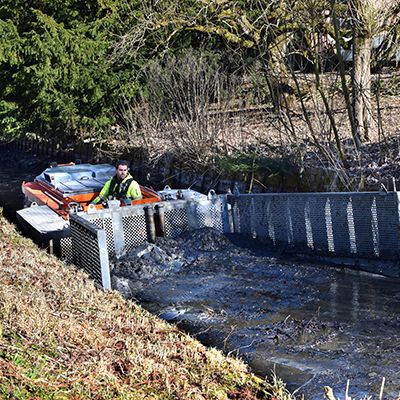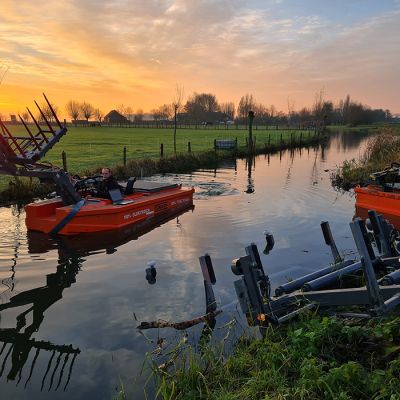Sustainability
What is responsible water management?
The quality of the water must be properly managed to ensure that it contains sufficient oxygen and organisms; By applying sustainable and responsible water management, the maintenance of water and banks ensures more life and vegetation. Both in and around the water.
.jpg?modified=1655108814)
Why is sustainable water management important?
Correct water management is essential to collect water in times of drought and drain it away when it rains heavily. Storing water during heavy rainfall prevents flooding. As a result, sufficient space is required to collect and drain a lot of water in a short time. Rainwater is also stored to replenish the groundwater in periods of drought. We do this to prevent the soil from drying out and becoming saline.
We can deal with too much or too little water through sustainable water management. A good flow through the watercourses is essential. Algae, too little oxygen or exotic plants that proliferate reduce the quality of the water.
By maintaining the vegetation correctly, we create more diversity; this variety ensures more life in the water and on land. Alternatives such as removing plants with roots or digging up plants cause soil erosion;
Dredging ensures more oxygen in the water and more flow in the watercourses. A layer of organic material on the bottom of the watercourse or ditch slowly silts up. This with all its consequences..jpg)
.jpg)
- For fish-friendly mowing
- The flashes of light alert the fish
- Directly mounted on the T-knife or mowing basket

- For removal of organic silt
- Suitable for ditches, canals and ponds
- Also restores the soil profile
.jpg)
- Mowing and removal in one pass
- Removed ground vegetation and floating vegetation
- Also suitable for collecting floating waste

Tips for sustainable water management:
- The banks and bottom of the watercourses are mowed periodically to promote the flow of water inflow and outflow. This is to prevent flooding or water shortage.
- Where possible, vegetation is left in place to improve biodiversity and water retention. This vegetation will be mowed the following year.
- Take protected plant species and flowers into account by not mowing during a specific period.
- Leave the plant roots standing so that the plants can grow.
- In the case of a dead-end watercourse or ditch, start at the dead end. This gives ditch animals an escape route.
- When dredging, provide an escape route for ditch animals. It is important to dredge slowly.
.jpg?modified=1655109878)
